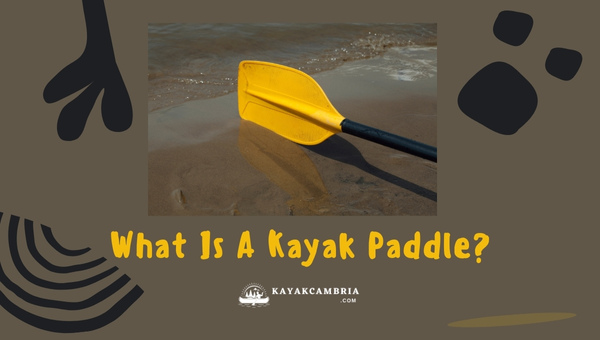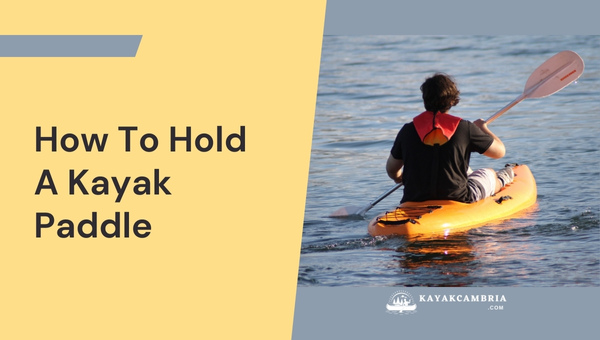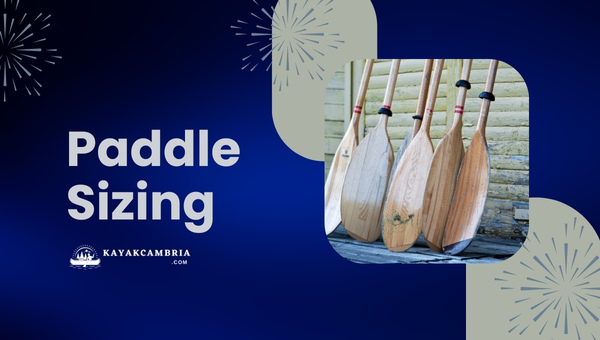A kayak paddle is one of the most important pieces of equipment when it comes to kayaking. It is used to maneuver and steer your boat safely. It is important to hold the paddle correctly, maintain control of your kayak and have a safe and enjoyable time on the water.
When kayaking, it’s important to know the correct way to grip the paddle with both hands near the center of the shaft. In this blog post “how to hold a kayak paddle correctly”, we’ll look at the correct way to hold a kayak paddle and how to position it for maximum control and efficiency.
Contents
Contents
What Is A Kayak Paddle?
A kayak paddle is a long-handled shaft with blades attached at both ends. The blades are held near where each blade meets the shaft. The paddle is not fixed to the boat, and you guide the paddle through the water with the position of your arms and the rotation of your body. Kayak paddles are used for the act of paddling. It comes in many shapes and sizes to suit different paddling styles and kayakers of all skill levels.

How To Hold A Kayak Paddle?
Holding a kayak paddle correctly is essential for maximum control and efficiency. You should hold it with both hands near the center of the shaft. There are the following steps to on how to hold a kayak paddle:

1. Hold the Paddle Correctly
The first step is to hold the paddle correctly, with your hands near the center of the shaft. Make sure that you have a good grip on the handle and that it feels comfortable for you. You should know the paddle you are using when paddling. The blades should be pointed up and the long edge of the blade should be facing away from you.
Paddles have two features that will give away how you are supposed to hold them. The first is the asymmetrical blades, which have a long edge and a short edge. This design allows for more power during your stroke, so make sure that the long edge is pointed up. The second feature is some paddle blades that are completely flat and symmetrical. In this case, it probably doesn’t matter which way you hold it.
2. Right Direction of Paddle Blades
It is important to remember which side of the blade you should be using when paddling. The concave side of a curved blade and the smooth side of a ribbed blade is known as the power face. Although it does not immediately seem to make a difference which side of the blade you use to pull your kayak through the water during the forward stroke, as the power face will generate more power with less effort. So, remember to keep the power faces of the paddle blades facing you.
The best way to visualize this is to picture the palm of your hand as a paddle. You should keep your fingers and thumb together and slightly curve your fingers inward. This will help to ensure that the correct side of your paddle blade is facing you and will help you generate more power through your stroke. The curved face of the paddle works with the current of the water and that is the part you want to pull through.
3. Paddle Is Right Side Up
Paddle blades also come in a variety of outlines. Some are symmetrical and others are asymmetrical. Both edges of the blade are shaped the same in symmetrical paddle blades. The symmetry or lack of it affects how the water flows across the blade. Asymmetrical blades work best with lower-angled strokes, while symmetrical blades work best with vertical strokes. There is no “right side” on a symmetrical paddle, so either side can be on the top.
However, you should hold the asymmetrical paddle as it was designed to be used. Asymmetrical blades come in a wide variety of shapes, and each one will have its unique shape. To get the most out of your paddling, make sure that the blade is held in its designed shape, with the concave side facing away from you.
4. Control Grip
Your control grip will be with your dominant hand and this is the hand that should remain in contact with the shaft at all times. If you are right-handed, your control grip will be with your right hand and the right paddle should be angled to be used as the upstroke. If you are left-handed, then your control grip will be with your left hand and the left paddle should be angled as the upstroke. The control grip does not change positions once it is on the paddle.
When you are performing the kayaking stroke, allow the paddle to rotate and reposition in your “loose hand”. Make sure that each paddle always enters the water smoothly. After you have gotten more familiar with the paddle and how it works, you can look for high-end paddles that you can take apart and adjust the angle of each blade to adapt the paddle balance as you like. This is a great way to customize your grip and stroke technique.
5. Hold the Kayak Paddle Correctly
After you have your kayak paddle, make sure you are holding it correctly. Begin by gripping the shaft with your dominant hand just over shoulder width apart. Place your other hand on the paddle shaft in line with your first hand. Both hands should be at an equal distance from the center of the handle and slightly bent at about a 45-degree angle for maximum power when paddling.
To make sure you are holding the paddle correctly if you were to put your paddle on top of your head while still holding on with both hands, your elbows should have a slightly smaller than a 45-degree angle. Your grip on the kayak paddle should not be too tight as it can lead to fatigue and discomfort in the arms.
Paddle Sizing: Choose The Right Kayak Paddle
Paddle sizing is key to ensuring that you have the right paddle for your body type and kayaking style. To find the right paddle size, measure both your height/torso length and the width of your kayak. For taller people, the distance between their shoulder and elbow joints is usually greater which means they may need a longer paddle to clear the sides of their kayak without having to twist awkwardly.

To get maximum power output with less effort when paddling, select a paddle that is slightly longer than your height/torso length. For wider kayaks, you may need to adjust the width of your paddle blade to get the right fit. If the shaft of your paddle is too wide for your kayak, it can cause drag and reduce power output.
You should also consider purchasing a paddle that has adjustable feathering. This feature allows you to change the angle of the blades, so you can customize your paddle for maximum performance in different conditions.
Frequently Asked Questions
1. What is the correct way to hold a kayak paddle?
The correct way to hold a kayak paddle is with your dominant hand at shoulder width on the shaft, and your other hand in line with the first one. Both hands should be slightly bent at a 45-degree angle for maximum power when paddling. To make sure you are holding the paddle correctly, put your paddle on top of your head while still holding onto it with both hands.
2. What size kayak paddle do I need?
To determine the right size kayak paddle for you, measure both your height/torso length and the width of your kayak. Taller people need a longer paddle to clear the sides of their kayak without having to twist awkwardly. For wider kayaks, you may need to adjust the width of your paddle blade to get the right fit.
3. What is an asymmetrical paddle?
An asymmetrical paddle is a type of kayak paddle that has two blades that are angled differently. This allows you to customize the angle of each blade for maximum performance based on your stroke technique and conditions. Asymmetrical paddles offer more control, power, and efficiency when compared to symmetrical paddles.
Final Words
This is very important to know the correct way to hold a kayak paddle. Having the right size kayak paddle and understanding the different types of paddles will also help you get the most out of your kayaking experience. With proper technique and a little practice, you can be sure to enjoy your time on the water. We hope our article has provided you with helpful information on how to hold a kayak paddle correctly. Happy paddling!

